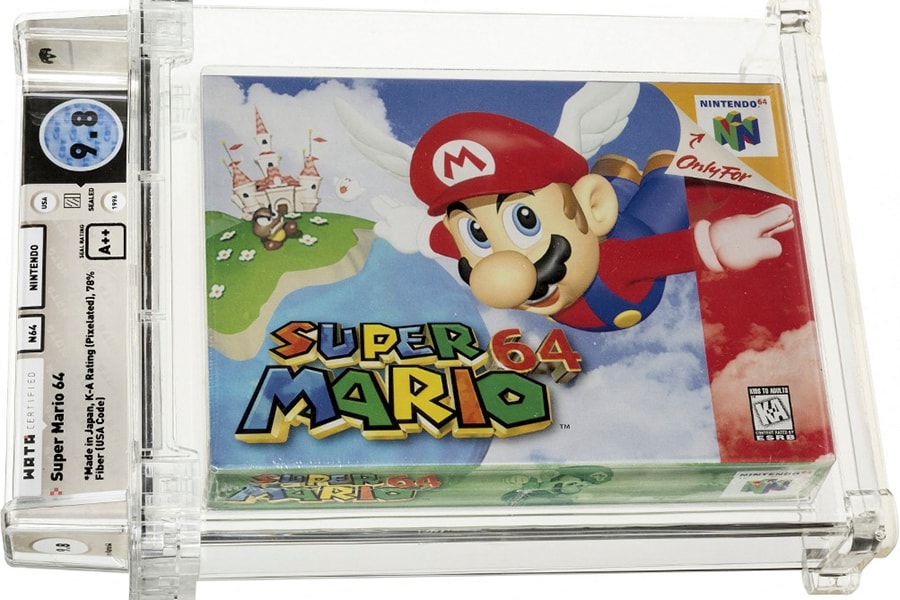
25-year-old copy of Super Mario 64 video game sells for record $1.56 million
The video game, still in its original packaging, and was sold at $60 apiece when it was first released in 1996 and went on to become the bestselling game for the Nintendo 64 console
 A cartridge of Nintendo's classic video game "Super Mario 64" set a world record on July 11, 2021, selling at auction for $1.56 million. The sale, the first ever of a game cartridge to surpass $1 million, came just two days after a sealed copy of "The Legend of Zelda," made for the old Nintendo NES console, sold for a then-record of $870,000. Dallas-based Heritage Auctions, which handled both sales, has not identified the buyers
A cartridge of Nintendo's classic video game "Super Mario 64" set a world record on July 11, 2021, selling at auction for $1.56 million. The sale, the first ever of a game cartridge to surpass $1 million, came just two days after a sealed copy of "The Legend of Zelda," made for the old Nintendo NES console, sold for a then-record of $870,000. Dallas-based Heritage Auctions, which handled both sales, has not identified the buyers
Image: Heritage Auctions
An anonymous buyer has paid $1.56 million for a 25-year-old copy of Super Mario 64 in its original packaging, a record price for a video game, according to the auction house that sold it.
Heritage Auctions said that it received 16 bids leading up to and during the live auction Sunday for the mainly pristine condition 3D Super Mario game, which sold for about $60 when it was released in 1996 and was the bestselling game for the Nintendo 64 console.
The top bid was $1.3 million, according to Heritage Auctions, which added a buyer’s premium of 20% to the gavel price to bring the total to $1.56 million.
©2019 New York Times News Service







